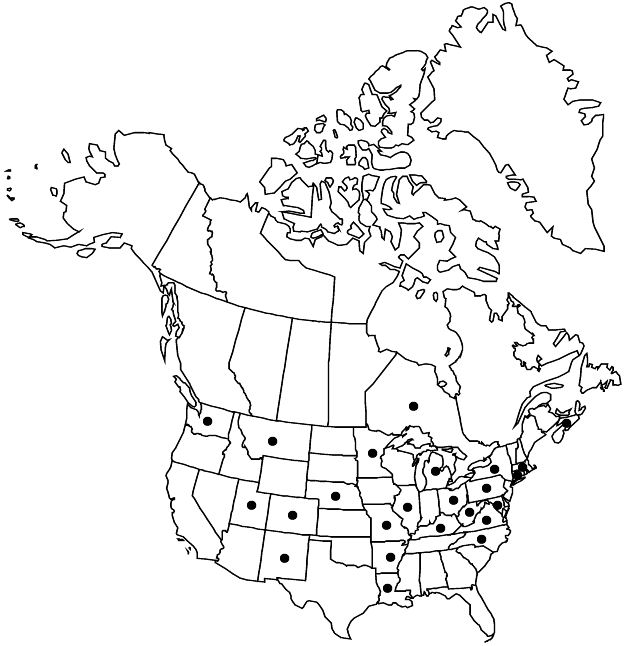Difference between revisions of "Spiraea ×vanhouttei"
Rev. Hort. 48: 260. 1876.
FNA>Volume Importer |
FNA>Volume Importer |
(No difference)
| |
Revision as of 23:13, 16 December 2019
Shrubs, 10–20(–25) dm, not rhizomatous. Stems arching, virgate, branched. Leaves: petiole 2–7 mm; blade ovate or rhombic-ovate to obovate, 3–5 × 2–3 cm, membranous, base cuneate to obtuse, margins crenate to coarsely serrate on distal 1/2–3/4, irregularly doubly serrate, or, sometimes, 3–5 lobed (especially long shoot leaves), venation suprabasal actinodromous, secondary veins not prominent, apex acute, surfaces glabrous. Inflorescences mostly axillary (borne profusely along branches), corymbiform or hemispheric panicles, 3–6 × 3–6 cm; branches glabrous. Pedicels 5–10 mm, glabrous. Flowers 7–10 mm diam.; hypanthia campanulate, 1–1.5 mm, surfaces glabrous; sepals triangular, 1–1.5 mm; petals white to cream, orbiculate, 2–3 mm; staminodes 10–16, mostly distinct; stamens 20–25, 0.5 times petal length. Follicles falcate, 2–3 mm, glabrous.
Phenology: Flowering May–Jun; fruiting Jun–Oct.
Habitat: Old homesteads, pastures, roadsides, railways
Elevation: 0–2000 m
Distribution

N.S., Ont., Ark., Colo., Conn., Ill., Ky., La., Md., Mass., Mich., Minn., Mo., Mont., Nebr., N.Mex., N.Y., N.C., Ohio, Pa., Utah, Va., Wash., W.Va., Asia (China), introduced also in Europe.
Discussion
Spiraea ×vanhouttei is widely planted as an ornamental near homes and along broadways. Concerning the potential for threat as an invasive or weedy species, R. B. Kaul (pers. comm.) has observed that it may persist for decades in old hedges and ornamental plantings; he has not seen any evidence of it volunteering or naturalizing and, despite repeated searches, has never seen a seed or seedling.
J. A. Harris (1917) questioned whether Spiraea ×vanhouttei had been proven to be the hybrid S. cantoniensis and S. trilobata. C. Sterling (1966) described the carpel anatomy of S. ×vanhouttei; but he did not examine the postulated parents. M. De Cleene and J. De Ley (1981) attempted to define the host range of infectious hairy-root (Agrobacterium rhizogenes) and correlate hosts with taxonomic relationships; they verified that S. prunifolia and S. ×vanhouttei are hosts to this disease but did not test other species of the genus.
Selected References
None.